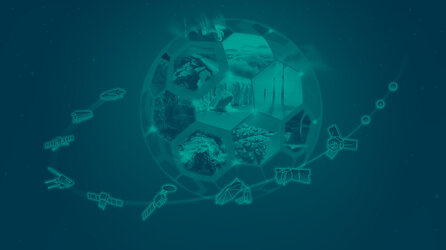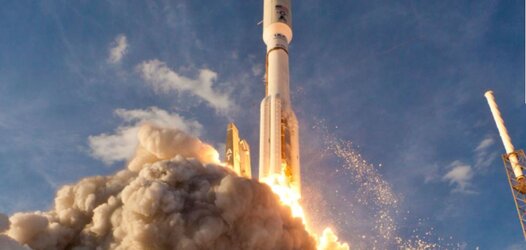New generation of sensors
Benefiting from the technological excellence Europe and Canada have to offer, the Swarm satellites carry a comprehensive range of new-generation instruments to deliver extremely accurate data to advance our understanding of Earth’s magnetic field.
Vector Field Magnetometer
This magnetometer is the mission’s core instrument. It makes high-precision measurements of the magnitude and direction of the magnetic field, i.e. the field’s vector. This latest generation of instruments was developed and manufactured at the Technical University of Denmark.
Absolute Scalar Magnetometer
This novel instrument measures the strength of the magnetic field to greater accuracy than any other magnetometer. It was developed and manufactured by CEA-Leti in France under contract with the French space agency, CNES. It provides scalar measurements of the magnetic field to calibrate the vector field magnetometer.

Accelerometer
This unit measures the satellite’s non-gravitational acceleration in its respective orbit and, in turn, provides information about air drag and solar wind. The instrument was designed and manufactured by the Czech Republic’s Aerospace Research and Test Establishment, VZLU.
Electrical Field Instrument
This instrument, positioned at the front of each satellite, measures plasma density, drift and acceleration in high resolution to characterise the electric field around Earth. Developed by COM DEV in Canada, this instrument is the first 3D ionospheric imager in orbit. It carries an ingenious thermal-ion imager from the University of Calgary, Canada, and the Swedish Institute of Space Physics, IRF, developed a unique concept for the sensors in the Langmuir probe. This probe provides measurements of electron density, electron temperature and the electric potential of the satellite.
GPS Receiver and Laser Retroreflector
Precise orbit determination relies on the data from the GPS receivers, which were developed by RUAG Space in Austria. Each satellite is equipped with a laser retroreflector from the German GFZ Research Centre for Geosciences to validate the GPS system.
The industrial consortium was led by Astrium Gmbh (now Airbus Defence and Space).













